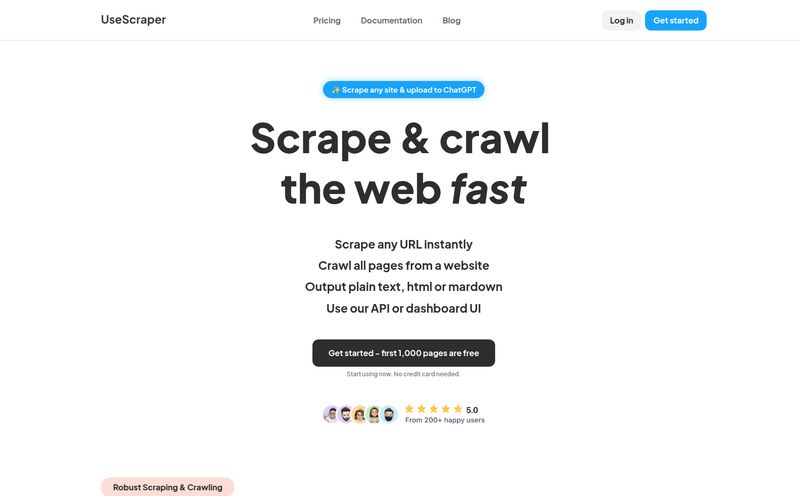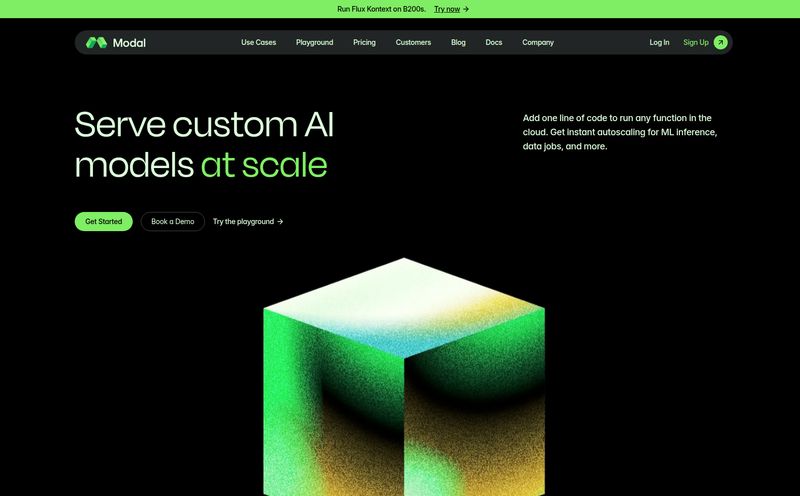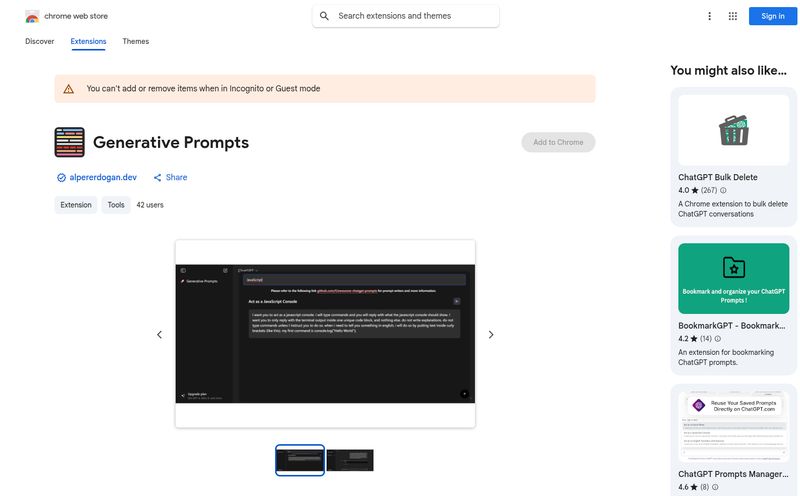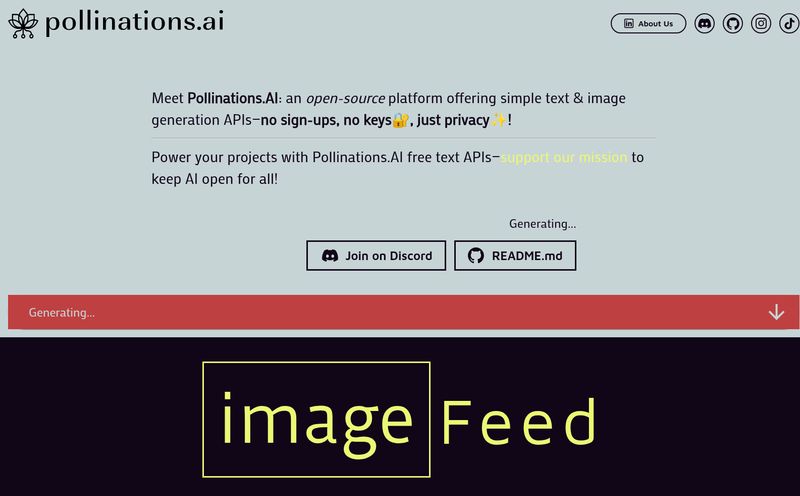If you've ever worked in SEO, digital marketing, or development, you've hit a wall. A tedious, soul-crushing wall made of repetitive tasks. Maybe it was pulling weekly competitor pricing. Or grabbing SERP data for a dozen keywords. Or maybe, just maybe, it was filling out the same god-forsaken web form 50 times for a new campaign launch.
I've been there. I've spent more hours than I'd like to admit wrestling with finicky selectors, getting my IP address blocked for the tenth time, and trying to make sense of a website's structure that was clearly designed by a mischievous goblin. It’s the part of the job that nobody really talks about, but we all do it. For years, the answer was to either suck it up and do it manually or learn a tool like Selenium or Puppeteer. Powerful? Yes. A massive time-sink and often overkill? Also yes.
So, when I stumbled upon Bytebot, my curiosity was piqued. The promise was almost too good to be true: simplify web scraping and automation using… plain English? An AI that understands what you want to do in a browser and just... does it? It sounded like science fiction. But as the homepage proudly states, it's about building “Desktop Agents” in the “easiest way” possible. I had to see what this was all about.
What is Bytebot, Really? And Why Should You Care?
Okay, let's cut through the jargon. At its heart, Bytebot is a translator. It’s like having a C-3PO for your web browser. You give it a command in simple, natural language—like “Go to the invoice page, find the one for October, download the PDF, and upload it to this form”—and Bytebot translates that into the complex series of clicks, types, and waits required to actually perform the task.
For developers, it’s a bit more technical. Bytebot is presented as a turn-key container. This means you can integrate its brain into your own applications to build custom desktop agents. Think of it as a pre-built engine for automation that you can drop into your own projects, saving you from building the whole car from scratch. This isn't just a simple macro recorder; it’s a foundational tool for creating sophisticated, AI-driven workflows.
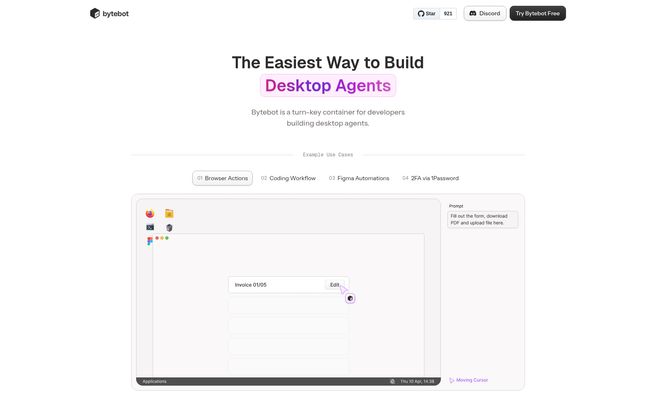
Visit Bytebot
Why should you, an SEO or a marketer, care about a developer tool? Because it represents a shift. The barrier to powerful automation is getting lower. Tools like this are making it possible to create highly customized solutions for our specific, niche problems without needing a full-stack developer on retainer.
The Magic Behind the Curtain: A Look at Bytebot’s Features
Bytebot isn't just a one-trick pony. Its ability to understand language is the core, but it's what it does with that understanding that's so impressive.
Natural Language is Your New Command Line
This is the star of the show. The idea of ditching complex code for simple sentences is a game-changer. Instead of writing a script that says `driver.findElement(By.cssSelector('#username')).sendKeys('myuser');`, you can just tell it to log you in. This dramatically lowers the technical skill needed to start automating. It democratizes the process. Suddenly, the person who actually needs the automation—the marketing manager, the data analyst—can have a more direct hand in creating it.
Web Scraping Without the Usual Headaches
Ah, web scraping. My old nemesis. Bytebot aims to make this process less of a battle. By telling it what data you want (e.g., “Extract the names and prices of all the products on this page”), it uses its AI to identify the relevant elements and pull them for you. This could potentially save hours of inspecting source code and dealing with dynamic content that breaks traditional scrapers. It's not magic, it still relies on the page structure, but it’s a much more intuitive approach.
Automating the Mundane Stuff
Beyond just grabbing data, Bytebot is a full-on automation tool. Filling out forms, clicking through multi-page processes, handling logins (even 2FA, according to their site), uploading files—these are the tasks that eat up our days. Being able to bundle these actions into a single command is incredibly powerful. Imagine setting up a new social media ad campaign. You could create an agent that takes a spreadsheet of ad copy and creatives, then navigates to the ad platform, creates a new campaign, fills in all the fields, uploads the image, sets the budget, and hits publish. All from one prompt. Wild.
Building Your Own Desktop Agents
This is where it gets really interesting for the more technically-inclined. The “desktop agent” concept means you're not just running one-off tasks. You're building a persistent, helpful bot that lives on your machine. You could build an agent that constantly monitors a set of competitor websites and sends you a Slack message when a price changes. Or an agent that checks your analytics accounts every morning and compiles a custom report. The possibilities are pretty vast.
My Honest Take: The Good and The Not-So-Good
No tool is perfect, and I always think it's important to look at both sides of the coin. After digging in, here's my unfiltered perspective.
What really works for me is the sheer simplicity of the core idea. The promise of reducing the complexity of web workflows is huge. As someone who values efficiency, the amount of time that could be clawed back from repetitive digital chores is immense. The developer-centric approach with the turn-key container is also smart; it gives the tool a high ceiling for power users.
However, there are a couple of things to keep in mind. The documentation suggests you might need some understanding of web scraping concepts. This makes sense. You still need to know what you want to accomplish, and you need to be able to tell if the bot is doing it correctly. It's not a complete “no-code” solution for absolute beginners, more like a “low-code” accelerator for people with some domain knowledge. Another point is the reliance on teh AI. The entire system hinges on the AI's ability to accurately translate your prompt into actions. What happens when it misunderstands? How do you debug a natural language command? I imagine there's a learning curve to figuring out how to phrase your requests in a way the AI best understands. It's a new skill in itself.
Who is Bytebot Actually For?
So, who should be rushing to try this? I see a few key groups.
- Developers and Dev Teams: This is the primary audience. Anyone building internal tools or integrating automation into their products will see the immediate value of the containerized agent.
- Data Scientists & Analysts: The pain of data collection is real. Bytebot could be a much faster way to build scrapers for gathering public data sets for analysis.
- Tech-Savvy SEOs and Marketers: If you're comfortable with a little technical wrangling and tired of the limitations of off-the-shelf tools, this is for you. Think custom rank tracking, automated site audits, or social media monitoring bots tailored to your exact needs.
If you're looking for a super-simple, one-click tool with a shiny user interface for a non-technical user, this might be a little too close to the metal for you right now. But if you're willing to get your hands a little dirty, the power is undeniable.
The Million-Dollar Question: Bytebot Pricing
Here's the interesting part. At the time of writing this article, if you go looking for a pricing page on their website… you’ll hit a “Page Not Found” error. Yep. It's not there.
What does this mean? It could mean a few things. They might be in a beta phase, focusing on community feedback before monetizing. They could be operating on a custom/enterprise pricing model where you have to contact them. Or they could just be revamping their pricing tiers. Your best bet is to hit the “Try Bytebot Free” button on their homepage or, even better, join their Discord server. That's usually where you'll find the most up-to-date information and get to chat directly with the team and other users. I always find that a company's community is a good indicator of its health anyway.
Frequently Asked Questions About Bytebot
- Is Bytebot free to use?
- Bytebot offers a “Try Bytebot Free” option, suggesting a free trial or a freemium tier. For detailed pricing, you'll likely need to check their website directly or join their Discord community as a public pricing page isn't available right now.
- Do I need to be a programmer to use Bytebot?
- It's built for developers, but the natural language interface makes it more accessible than traditional coding. However, having a basic understanding of how websites work and what you're trying to automate will be very beneficial. Think of it as low-code, not no-code.
- How is Bytebot different from tools like Selenium or Puppeteer?
- Selenium and Puppeteer are libraries; they are toolkits that require you to write code to control a browser. Bytebot is a higher-level abstraction. It uses AI to interpret your plain English commands, so you don't have to write the low-level code yourself. It's doing the work of a Selenium script, but you're directing it with words instead of code.
- What kinds of tasks can I automate with Bytebot?
- A wide range! The main use cases are web scraping (data extraction), form filling, file uploads and downloads, and navigating through login screens and complex website workflows. Essentially, most repetitive tasks you can do in a web browser can be automated.
- How reliable is the AI task translation?
- This is the core of the technology. While powerful, all AI has its limits. There will likely be a learning curve in how you phrase prompts for maximum accuracy. It's a potential con to be aware of—you're relying on the AI's interpretation, which might occasionally need correction or clarification.
Final Thoughts on the Age of Desktop Agents
Bytebot is genuinely exciting. It sits right at the intersection of AI, developer tools, and practical automation. We're not quite at the point where we can just mumble at our computers and have our entire workday automated away (a man can dream), but this is a significant step in that direction. By replacing complex scripts with intuitive language, Bytebot is lowering the barrier to creating powerful, custom automations.
For anyone who has felt the pain of manual data entry or wrestled with brittle scraping scripts, a tool like this feels like a breath of fresh air. It’s a glimpse into a future where our interaction with the web is more conversational and a lot less tedious. And I, for one, am here for it.
Reference and Sources
- Bytebot Official Website: https://bytebot.dev/
